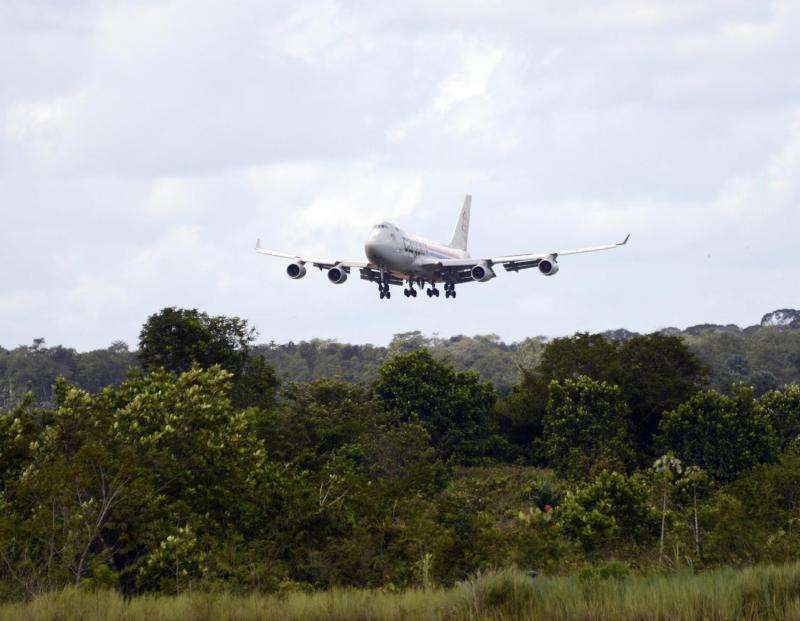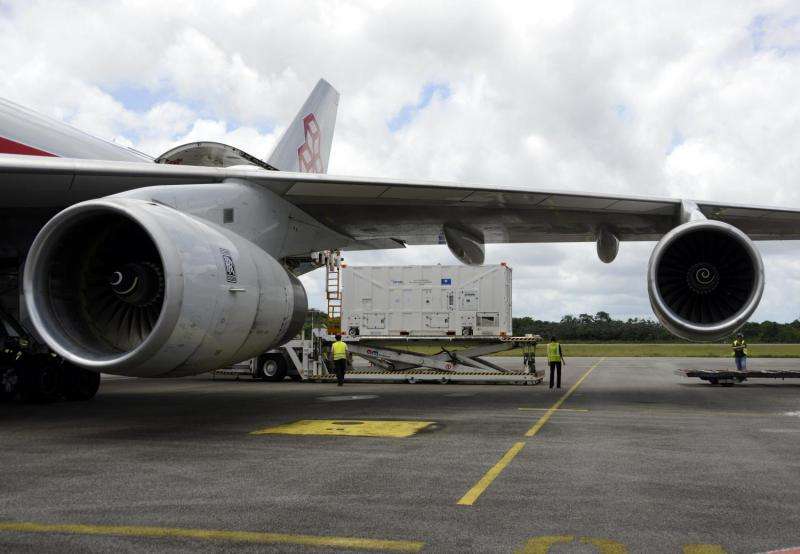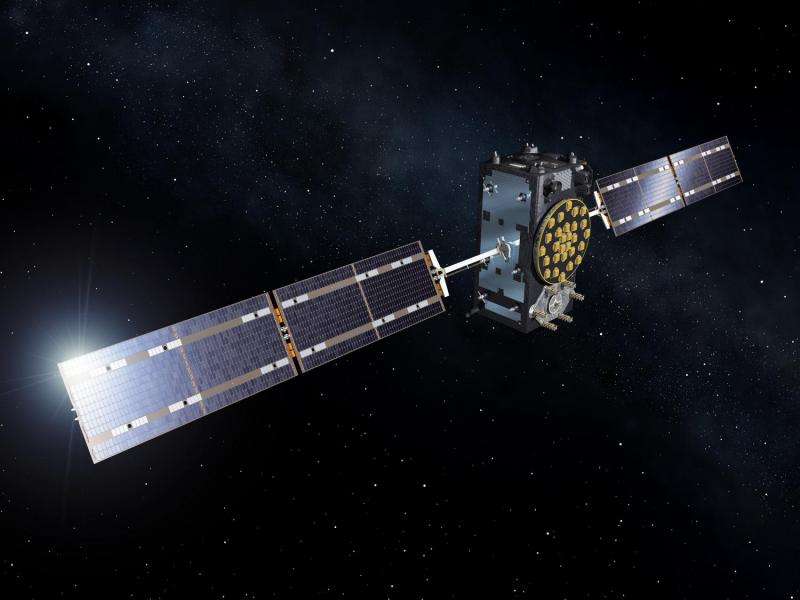Satellite touchdown in run up to Galileo launch

The latest pair of navigation satellites has reached Europe's Spaceport in French Guiana, beginning a new Galileo launch campaign, which will culminate in a launch on 24 May.
The 13th and 14th Galileo satellites left ESA's technical centre in Noordwijk, the Netherlands, on Monday, safely cocooned within protective air-conditioned containers.
They were taken by road to Luxembourg Airport, where they were loaded aboard a Boeing 747 cargo jet for a dawn takeoff the next morning.
The satellites touched down at Cayenne – Félix Eboué Airport in French Guiana at 11:15 on Tuesday local time.
Still within their canisters, they were taken by road to the Guiana Space Centre and unboxed that evening, safely within the cleanroom environment of the Centre's S1A payload preparation building.
The building will remain their home for now, with a 'fit check' scheduled next, to ensure the satellites can be attached to the dispenser that will hold them during their ride to orbit and then release into space.
To be launched by Soyuz, this pair will join the 12 Galileos already in orbit. A second launch is planned for the autumn, with four satellites carried aloft on a customised Ariane 5 for the first time.

That will mean 18 Galileo satellites in orbit by the end of this year.
About Galileo
Galileo is the EU's own global satellite navigation system, consisting of 30 satellites and their ground infrastructure.

The definition, development and in-orbit validation phases were carried out by ESA, and co-funded by ESA and the European Commission. This phase created a mini constellation of four satellites and a reduced ground segment set up to validate the overall concept.
The Full Operational Capability phase is fully funded by the EU and managed by the Commission. The Commission and ESA have signed a delegation agreement by which ESA acts as design and procurement agent on behalf of the Commission.
Provided by European Space Agency


















